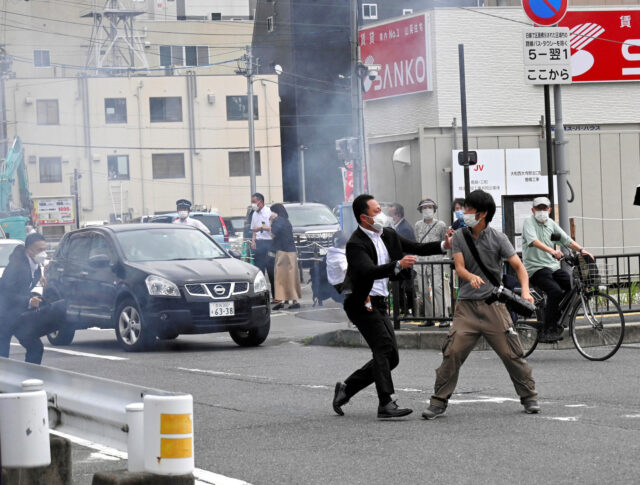
The Assassination of Shinzo Abe in Japan and the Threat from Primitive Homemade Weapons
Publication: Terrorism Monitor Volume: 20 Issue: 19
By:

On July 8, former Japanese Prime Minister Shinzo Abe was assassinated while delivering a speech in Nara, Japan (The Japan Times, July 8). The suspect, 41-year-old Tetsuya Yamagami, who was an ex-member of the Maritime Self-Defense Force, shot the former premier using a homemade improvised gun (The Japan Times, July 10). The fact that Yamagami successfully employed a fully homemade, but still crude, weapon using commercially available parts highlights the threat of such weapons and the ability of individuals to circumvent existing gun laws to manufacture their own.
The evolution of the threat from homemade weapons is two-fold: one that is modern and technologically driven through the ability to print 3D-weapons; and another that is more primitive as in the Abe assassination in Japan. Until Yamagami’s attack, authorities worldwide had mostly been concerned about the technologically driven aspect of the threat. For example, in May 2022, both Europol and the Dutch National Police highlighted the increasing threat from 3D-printed weapons (HSToday, May 28).
Between 2019 and 2022, there have been at least nine known cases of violent actors possessing, attempting to make, and using homemade weapons in Europe and Australia. The October 2019 attack on a Jewish synagogue in Halle, Germany, in which two people were killed, was the first terrorist attack to have involved homemade weapons (Independent, October 11, 2019). The attacker, moreover, had a cache of guns which employed 3D-printed components. The case in Japan was the only other known case of a homemade weapon being actively used in an attack since Halle.
The Murder Weapon
The weapon used in Abe’s assassination was a 40 by 20 centimeter double-barrel homemade gun comprised of two metal plumbing pipes taped onto a wood mount. The firing component featured a basic electrical wiring circuit connected to commercial batteries (The Straits Times, July 9). The ammunition and propellant used was likely procured commercially or self-made (The Japan Times, July 10).
On the whole, the pistol was constructed with commercially available, hardware store materials (The Japan Times, July 10). The suspect had searched for assembly methods online, including on YouTube (The Japan Times, July 11). The gun could have been manufactured in a matter of days with minimum knowledge and basic engineering skills (The Straits Times, July 9; The Japan Times, July 10). Yamagami was found to have made at least three more multi-barreled guns from a raid on his home (Twitter/@PopularFront_, July 8). It is unclear whether those guns were made for practice or to be used in other attacks.
Limitations of Homemade Weapons
Two main issues with homemade weapons are their durability and reliability. Due to their improvised nature, homemade weapons usually do not function for as long and as well as factory-made weapons. For example, 3D-printed guns (whose components are often made of plastic) suffer damage due to melting from heat exposure during firing and have a maximum capacity of a couple hundred rounds before it has to be cooled off (YouTube/3D Media Research Group, December 16, 2021). The guns are also vulnerable to jamming and misalignment resulting from either printing defects or melting.
In fact, the firearm used in the 2019 Halle attack had suffered from numerous malfunctions, which reduced the number of casualties (The Times of Israel, October 10, 2019). As for Yamagami’s weapon, while it was clear the gun was only meant for use on a targeted individual, whether it would have survived more shots and a longer duration is questionable. Based on the limitations and past cases, the use of these weapons in large-scale mass casualty attacks remains unlikely unless the weapon is produced with significant quality. However, these weapons are perfectly viable in smaller-scale, limited attacks as seen in Halle in 2019 and Japan most recently.
Conclusion
The significant point that the Japanese case highlighted was the fact that a simple, crude gun made from hardware store components was able to kill a high-profile individual. The weapon did not employ much technological sophistication and all that was required to manufacture the weapon was a basic understanding of high-school physics and engineering. The proliferation of resources online, including both instructions and manuals, and component materials to manufacture weapons has reduced the capability threshold for less-skilled individuals to manufacture these weapons and employ them in attacks. The case also shows that the threat posed from this type of crude weapon, as opposed to more sophisticated ones, may have been underestimated.




